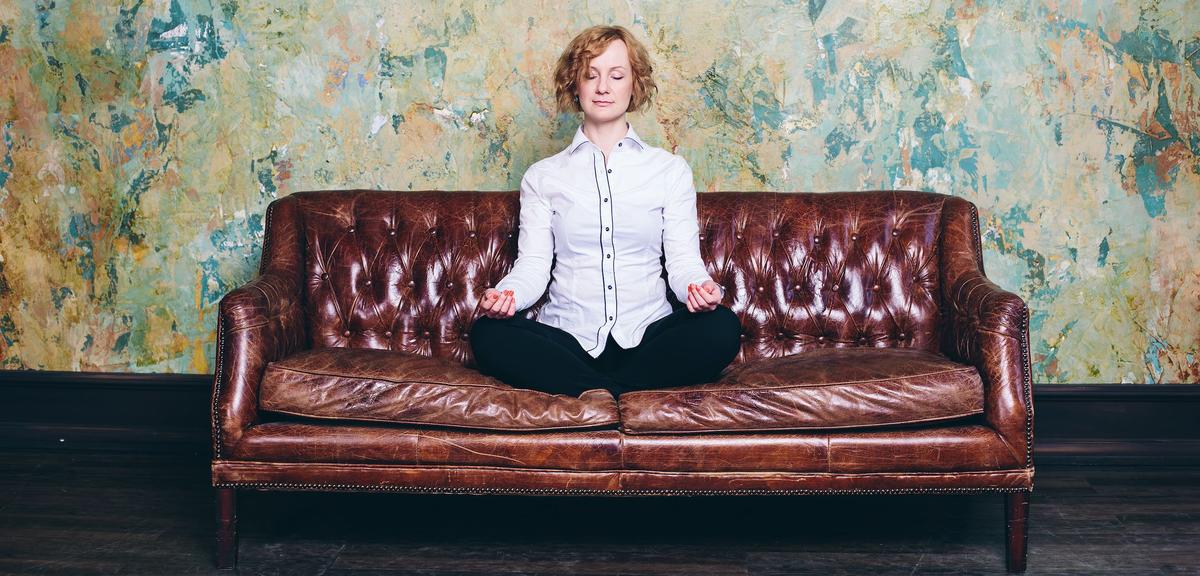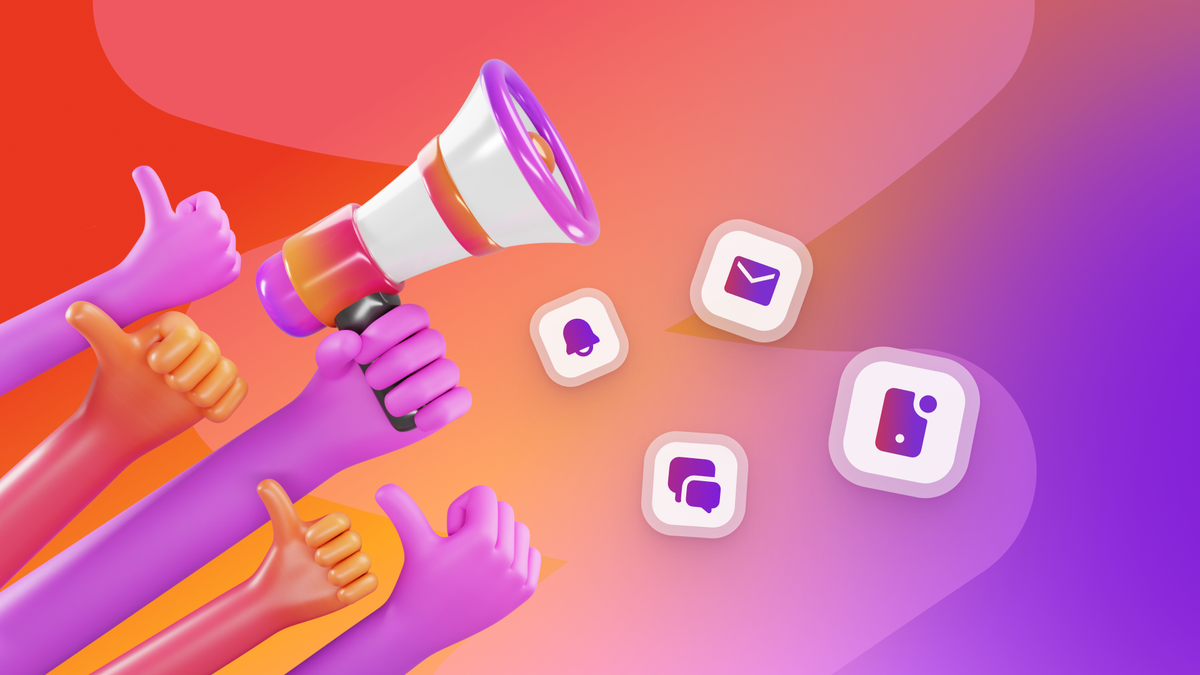How Meditation Can Make You a Better Marketer
Published on February 08, 2016/Last edited on February 08, 2016/9 min read


Team Braze
A while back we spoke with Tamara McCleary, relationship and conscious business expert, about how to make your brand story connect more deeply with your customers. The theme she kept coming back to was humanity. She referred to the “human connective pieces” that make products and services important. In that piece, we took a look at how to connect humans to the products and services they love. Today, we’ll look at how meditation can help humans (marketers) connect more deeply to other humans (customers). We’ll look at how marketing from a place of empathy, rather than fear, can serve us all.
How can meditation make you better at your job as a marketer?
Spoiler alert. Meditation can make you better at everything.
Aida (pronounced Ida) Bielkus PhD, E-RYT 200, is a dedicated Master Health Yoga Life Coach and yoga teacher at the company she co-owns with her mother and sisters, Health Yoga Life. She co-created The Emotional Responsibility Method™, which guides her work with coaching clients, and earned her PhD of Psychology from California Southern University, where her degree thesis aimed to support mind-body-spirit integration.
She explains that meditation turns down the volume on our over-active fight or flight response.
Fight, Flight, Fear, and Marketing
How fight or flight works inside of us
“We move into fight or flight more often than we need to,” says Bielkus. “It’s a very natural response to our world,” but it can be detrimental to how we feel and act.
Our internal responses to our external world are born from our instinct for self preservation. “It’s how we survive. We instinctively know what to do when we’re in danger—we run! We want to protect ourselves, protect our bodies, protect our heart.” That desire to survive is why fight or flight is hard coded.
But, in our very cognitive modern lives, “we use fight or flight too much,” Bielkus continues. “When we get an email from our boss, and they’re mad at us, all of the sudden our computer turns into a lion. We react, internally, as if that lion might bite our heads off. But it won’t. It’s not a lion. It’s a computer. Yogis recognized thousands of years ago that this sort of thing happened.”
We practice meditation to counter this phenomenon.
How fight, flight, and fear work in marketing and advertising
Marketing (and other media) can play into fear, and drive guilt, greed, or pride. Marketing can exploit the insecurities of the consumer. Harnessed insecurities lead to shame, and it turns out that humiliation might be the most intense human emotion. We’ll go to great lengths to stave off those feelings. We’ll buy and download and consume long past reasonable points of need or satiety to avoid feeling fear and shame.
“And where are we going with that?” asks Bielkus. “As a marketer, thinking about society,” is this the role you want to play?
So what’s the solution? How can meditation help you, as a marketer?
“If you’re in your own fight or flight, you can’t be in your own empathy,” says Bielkus. “It’s that simple. You can’t model connection, or lead, if you’re out of balance.”
Bielkus suggests, “If you get out of fight or flight, and into balance, you can tap into the real authentic needs [of your customers] instead of the extreme fear-based needs,” we so often experience. “Fight or flight stems from the belief that life is always happening to us. Really, life happens from us.”
When you’re healthy and in balance, you’re able to create healthy marketing. You’re better equipped to market from a balanced place, toward people’s true desires, which is better for everyone, especially the customer.
Through meditation, a marketer is better enabled to assess the true desires of their customer, and to empower them to make healthy decisions
The Vedas are an ancient text from which several religious philosophies and the principles of yoga were born. The Vedas describe enlightenment, essentially, as the understanding that we’re all one. “There is no duality. No separation between us and one another, or us and a higher being. We are the higher being,” says Bielkus. “Not a hierarchical higher being. It’s a higher state, with a more awakened sense of self.”
When you adopt a spiritual practice, and adopt meditation, “you begin to feel intuitive. You move toward enlightenment. Your neurotransmitters light up. You become empathic and blissful.”
How does it help us to create healthy marketing?
You can see other people when you’re not in your own suffering. “You can laser in on what people’s authentic need might be. You can market from a non-fear place, to support [the consumer’s] human capacity, to help them be the best human they can be.”
What if we’re marketing products that aren’t all that meaningful, and don’t actively move people toward heightened states of bliss?
When you create a marketing message from a state of oneness, our expert says, and invite people into that space in your messaging and interactions, you tap into an “underlying understanding that there is this part of you that’s really amazing and good.”
What if you’re, say, a clothing retailer? “It’s not about an outfit. The deeper need is for someone to see you, to acknowledge you. It’s all about connection. Everything is about connection, tapping into that deeper need. That you’re not separate from everyone else. You buy the shoes or the coat, and all of the sudden, ‘I’m a part of something!’ Apple taps into it in their marketing a lot.”
It’s true that Apple’s marketing has lots of emotional appeal. They’ve built a clan of fanboys and fangirls across the globe. There are even thousands of professional and home videos out there of people unboxing their brand new apple products for the first time. Apple has created the feeling of a desire for connectedness that Aida has so much to say about.
What the science has to say
How meditation changes the brain
In our brains, the fight or flight impulse lives in the amygdala. When we become anxious, afraid, ashamed, depressed or experience any of the other negative responses sometimes associated with modern marketing, our amygdalae enlarge. Studies have shown that even children with heightened anxiety have enlarged amygdala.
“Our amygdalae are huge and over firing,” says Bielkus. Of fear-based marketing, she asks, “Why would you want to continue to make people walk around with these huge amygdalae?”
In 2014, Scientific American reported on a Mass General study that showed, “after an eight-week course of mindfulness practice, the brain’s ‘fight or flight’ center, the amygdala, appears to shrink. This primal region of the brain, associated with fear and emotion, is involved in the initiation of the body’s response to stress. As the amygdala shrinks, the prefrontal cortex—associated with higher order brain functions such as awareness, concentration, and decision-making—becomes thicker.” In other words, “our more primal responses to stress seem to be superseded by more thoughtful ones.”
Another study shows that mindful meditation can improve decision making. Deepak Chopra tells us meditation awakens creativity, helps to clarify visions and goals, and enhances clarity and focus. The Harvard Business Review tells us CEOs are using meditation to build resilience and enhance emotional intelligence, which is critical for successful relationships of any kind. The list goes on.
How meditation changes the body
Bielkus shares that regular practice can, “actually change the entire biological and chemical patterning of the DNA.”
One example comes from Nobel Prize-winner, Elizabeth Blackburn, who recently proved that mindful meditation can slow the aging process, and reverse the effects of stress and depression.
“Every single cell in your body has DNA,” explains Bielkus, “and at the end of each DNA strand, there are little caps, sort of like the caps of a shoelace. As we age [or experience chronic psychological distress], these caps fray all over the place. This causes our cortisol levels (stress hormones) to go out of control, our insulin levels heighten. In that state, how could we ever expect to make the right decisions as a consumer,” or expect to reach consumers authentically?
Meditation has been proven to essentially repair those shoelace tips, called telomeres, and return a body at the physical level to a younger-feeling, empirically healthier state.
“With meditation, cortisol levels drop,” says Bielkus. “The body produces more serotonin. Meditation can affect neuropeptide production, too, a physical process that begins in the gut, and travels to the brain. Meditation is a mind-body activity. You can’t separate one from the other.”
Where to begin
Beginning a meditation practice is simple. Aida Bielkus takes us through a simple series of steps to get started.
- Set a timer. Begin where you can. Even with 5 minutes. Work your way up to 20 minutes over time. 20 minutes is ideal.
- Sit or lay down comfortably with a relatively straight spine.
- Close your eyes and breathe normally.
- Meditation begins not by focusing on nothing. Beginners get started by focusing on one thing. Usually a mantra. A mantra is a word or sound repeated to aid concentration in meditation. You may wish to begin with the two syllable Sanskrit word, “Satnam.” Satnam, roughly translated, means something like truth. Choose to prefer your mantra over everything else for the time that you have set. The meaning of the mantra is preferred not to be recognized.
- Hear your mantra come into your thoughts. Hear it, but do not over think it. Hear it as you would a gentle wave on the beach.
- If other thoughts come in, it is okay. Recognize them as thoughts, and go back to preferring the sound of your mantra.
- If your thoughts bombard you, that’s okay. Simply do your best to prefer your mantra.
- If you become void of thoughts, and of your mantra, that’s great. Stay in silence, and enjoy.
- If you fall asleep, that’s okay, too. It means you need to sleep.
If you’re interested in learning more about the practice of meditation from Bielkus, her business, Health Yoga Life, offers an online meditation course and virtual yoga class subscription. And of course, there are loads of meditation apps out there that you can try to begin a practice on your own.
Releated Content
View the Blog
Enterprise generative AI: Transforming data, decisions, and customer experiences

Team Braze

Omnichannel personalization: Delivering consistent, connected customer experiences

Team Braze

Are you AI-savvy enough to survive? A wake-up call for CMOs
